6 Android Testing Frameworks you Need to Know About in 2025
"I'm going to destroy Android because it's a stolen product," declared Steve Jobs in 2010.
Jobs' strong sentiments toward Google and its smartphone software are well-documented, and the numerous legal battles involving Apple and various Android partners underscored that he meant it seriously. Fast forward to 2023, and Android stands as the arguable leader in the global smartphone platform arena, commanding a substantial 70.8% market share, as opposed to Apple's 28.4%, according to Statista.
In today’s article, we’ll reveal some of our favorite Android testing frameworks and spell out some of the pros and cons of each framework based on users' feedback.
Arrange a discovery call today to learn how we can help your business make high-quality Android apps
Why Android?
Android's open-source nature makes it the platform of choice for many users and developers.
Proponents of Android cite its unparalleled accessibility, customization, and developer-friendly environment. But Android's appeal is not limited to its technical merits. It arguably caters to a more diverse user base, with smartphones available for any budget. 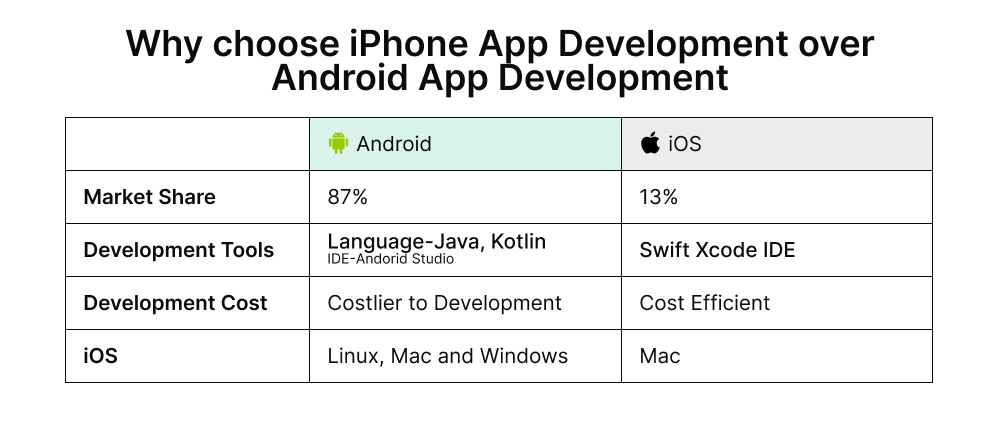
Additionally, Android is an excellent choice for emerging app developers thanks to its inclusivity and the support of an active open-source community.
Android testing in action: Top 6 Android testing frameworks
Let's take a closer look at the practical application of Android Automation Testing in popular tools and frameworks:
1. Global App Testing
Global App Testing stands out as a mobile app testing company leveraging a distributed "crowd" of over 90,000 testers. Whether you specify test conditions or seek consultation on the preferred device distribution, the scale of the crowd becomes a distinct advantage in ensuring thorough and diverse testing scenarios for your product.
GAT offers testing services tailored to companies engaged in software, web apps, mobile apps, and website development, including SaaS companies. 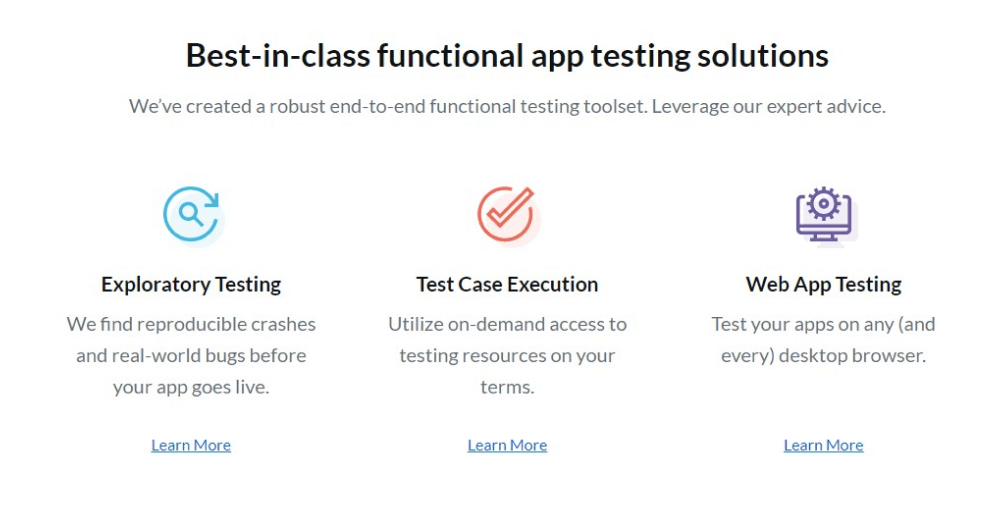
GAT's services are specifically designed to support Agile and DevOps teams in adhering to their release schedules while also enabling them to address any issues that may arise during the testing phase. This challenge becomes particularly pronounced when striving for compatibility across diverse operating systems like Android and iOS and various devices.
Pros
✅ Global App Testing provides API and web tools to set up tests efficiently across applications, saving you valuable time and effort.
✅ The company quickly adapts to changes in workflow, providing users with a seamless and positive experience.
✅ The company can test in the staging environment, not just on live products.
✅ Quick response and complete results within 6 or 48 hours of submitting a test job dependent on targeting enable teams to promptly address issues, optimizing release velocity.
✅ Similarly, our 24/7 test launch availability allows you to release on a friday evening after work and wait for the results to arrive before Monday.
✅ Developers no longer need to struggle with replicating issues, as the software streamlines the process and gives the full environment and test details of all bugs along with video evidence of the issue at work.
✅ Advanced targeting and test coverage can lead to the discovery of bugs that impact old OS and devices.
✅ The generated written and video documentation of features needing attention supports prioritization and resolution in engineering tickets.
✅ Launch tests in 190+ countries and territories
✅ Live user testing and feedback help identify critical issues before public release.
✅ The software allows running general regression tests and deep-diving into specific features, ensuring a quality user experience and preventing potential crashes.
✅ The software supports projects with small headcounts by identifying gaps in project structure around testing, which is particularly beneficial for small startups without dedicated QA teams.
Cons
❌ The absence of upfront cost information makes it challenging for users to make informed decisions about suitable plans for their business.
❌ GAT is a manual testing solution meaning that they do not offer automated tests.
2. Appium
Appium is a popular open-source testing tool known for its cross-platform flexibility.
For instance, imagine a development team creating a budget-tracking app that must work seamlessly on iOS and Android platforms.
By using Appium, the team can create test scripts in various programming languages, ensuring a consistent testing approach across both platforms. Additionally, Appium Grid allows tests to run in parallel, streamlining the testing process and saving significant time and effort.
Pros
✅ Appium simplifies automated testing by not requiring app recompilation or modification.
✅ Appium and Selenium share the same JSON wire protocol, making it easy for QA teams familiar with Selenium to transition and enjoy a seamless testing experience.
✅ Accessing Android application logs is possible through the JSON Wire Protocol endpoints. This feature is handy for monitoring and error reporting, as it enables QA teams to extract valuable insights from the detailed system and application logs that Logcat records on Android devices.
✅ It supports the Espresso Driver in Android tests, resulting in a more integrated approach to interact with the Android user interface (UI) layer.
Cons
Based on users’ feedback from the review sites, such as G2, these are the cons of Appium they submitted:
❌ Executing tests with Appium can sometimes be a slow process, according to feedback, which can be challenging when scaling up a test suite.
❌ The lack of robust debugging features may create difficulties in identifying and resolving issues during testing, especially when used without additional debugging tools.
❌ Although known for its flexibility, using its full potential for testing native apps requires users to understand native selectors and the underlying architecture deeply.
❌ When using the Espresso Driver in Appium, there may be a delay in the execution of test scripts because of the additional layer between the Android device and the test scripts.
3. Robotium
Robotium is an Android automation testing framework that caters to native and hybrid apps. It is a powerful tool that creates reliable automated black-box UI tests for Android applications.
With Robotium, you can create tests that cover a wide range of scenarios, from system-level tests to user acceptance tests. Robotium allows for manipulating device features such as Wi-Fi, mobile data, screen orientation, and keyboard settings, enabling the simulation of real-world scenarios for testing purposes.
Pros
✅ It integrates seamlessly with Android Studio and is compatible with Apache Maven or Gradle, making it easy to incorporate into CI/CD pipelines.
✅ Using the recorder feature can significantly reduce the time required for test development. However, this feature is not open source and requires a paid license for Android Studio and Eclipse.
✅ Teams experienced in native Android development will find Robotium easy to adopt as it uses the same building blocks for tests.
✅ Robotium, like Espresso, utilizes JUnit TestWatcher to define Rules. This feature effectively logs error messages during test execution, facilitating issue identification and resolution.
Cons
According to the feedback of Robotium's users, here are the cons we collected:
❌ To use Robotium for testing, a separate test application must be created from the main app. This can introduce maintenance challenges as changes made to the main app may require updates to the test app.
❌ Robotium tests can only be run on one device at a time. It can be challenging to use it when trying to scale tests. It can impact the efficiency of testing processes, especially in situations that require simultaneous testing on multiple devices.
4. Selendroid
Selendroid is a tool for testing Android apps based on the Selenium framework. For example, it can be handy for testing health and fitness apps that involve recording and analyzing user workouts. Selendroid's ability to drive the user interface of native and hybrid apps can ensure that the app's features, such as workout tracking and data visualization, work smoothly across different Android devices.
Pros
✅ High scalability allows for interaction with multiple Android devices simultaneously.
✅ It allows hot-plugging of hardware devices, which enhances the convenience and flexibility of testing. Devices can be connected or disconnected during testing without interrupting overall execution.
✅ Integration with Selenium Grid provides full parallel testing capabilities.
✅ Logging support through Android Logcat provides valuable insights during the testing process.
Cons
According to the feedback of Selendroid's users, here are the cons we collected:
❌ Locale settings must be specified before executing tests on an emulator, as modifying them afterward is impossible. One workaround is to use different emulators for testing against various locales.
❌ It may be challenging for teams new to Selenium as there could be a learning curve.
5. Calabash
Calabash, an open-source mobile testing framework, is designed to help teams achieve this goal by enabling continuous testing through automated acceptance tests. For example, when developing an e-commerce app, it is crucial to ensure that critical functionalities such as product search, payment processing, and order tracking work flawlessly.
These tests allow you to validate the app's crucial features across various scenarios and user interactions, ensuring a smooth and error-free user experience.
Pros
✅ Automated acceptance tests in live environments allow the simulation of authentic user interactions and scenarios.
✅ Versatile support across various app types, including native Android, native iOS, and hybrid mobile apps. Test scripts are written in the Ruby programming language, offering flexibility and ease of scripting.
✅ Testing on Visual Studio App Cente enables comprehensive testing across numerous real devices, ensuring the app performs optimally across various screen sizes and device configurations.
Cons
According to the feedback of Calabash's users, here are the cons we collected:
❌ Limited interaction with device functionalities, such as the camera and other hardware attributes. The framework interacts with visible view objects on the current screen using Ruby APIs, making it challenging to test certain hardware features directly.
❌ The activity level of the Calabash Android library's GitHub repository appears to be low, which may raise concerns about its long-term viability for testing needs.
❌ Calabash lacks built-in error reporting or monitoring tools, requiring teams to develop their mechanisms, which adds an extra layer of effort for effective testing.
❌ Slower launch speed compared to alternatives may affect the efficiency and speed of the testing process, especially when dealing with a large number of tests.
6. Espresso
Espresso, a testing framework developed by Google, is a choice for testing the UI of Android apps. Let's say a team is developing a news app with a complex user interface.
Espresso's robustness and flexibility enable the team to test the app's visual elements, ensuring that news articles are displayed correctly, buttons are responsive, and the overall user experience is seamless.
Pros
✅ It offers a user-friendly experience, making it easy for developers to work with. Tests are compiled into a separate APK, streamlining the process and enhancing test development efficiency.
✅ Cross-platform execution allows tests on an Android emulator across various platforms, including macOS, Windows, and Linux.
✅ Simple and Reliable APIs contribute to its reputation as a great framework for writing UI tests. These APIs and seamless integration with Android Studio enhance the overall testing experience by providing precise and consistent interfaces for developers and testers.
✅ Nonflaky tests ensure that test outcomes are consistent and dependable, fostering confidence in the accuracy of the results.
Cons
According to the feedback of Espresso's users, here are the cons we collected:
❌ Performing actions can be challenging when dealing with intricate elements like a "RecyclerView" with many items. Although Espresso provides APIs for complex actions, using them successfully requires a deep understanding of the API behavior.
❌ Espresso does not come with any built-in tools for error reporting or monitoring. To handle logging of informational or error messages, teams using Espresso must define a rule using the JUnit TestWatcher.
❌ Espresso's support is exclusive to the Android platform, limiting its applicability to teams working solely on Android app automation.
Best practices for Android app testing
To effectively navigate Android automation testing, it is important to follow best practices.
1. Define testing scope
Clearly outline the scope of testing to establish realistic expectations. For instance, when developing a weather app, focus on testing core functionalities like real-time weather updates, location accuracy, and user interface responsiveness.
2. Select appropriate frameworks
Choose testing frameworks based on project requirements rather than blindly opting for popular tools. For example, suppose you are developing a travel app. Select a framework that aligns with the app's unique features and complexities in that case.
3. Test on real devices
To ensure the optimal performance of an Android application, you should test it on actual devices that replicate real user conditions. For instance, if you are developing a messaging app, you should test it on real devices to verify message delivery and real-time notifications.
Also, emulators and simulators may not be sufficient to simulate low battery, weak internet connections, or incoming calls.
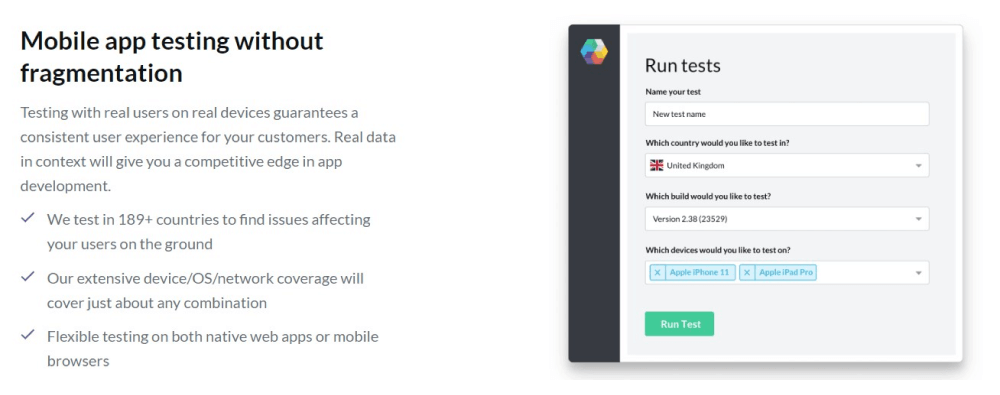
4. Establish scripting rules
Maintain uniformity in scripting, including user comments and code indentation. This way, you will ensure readability and ease of collaboration, especially in scenarios where multiple team members contribute to test scripts.
5. Adapt to OS updates
Android frequently releases OS updates, necessitating the need for test case upgrades. To ensure continued compatibility, you need to update test cases to accommodate changes introduced in the latest Android OS version.
6. Measure testing impact
Measure the impact of automation testing through metrics such as execution time, pass rate, test coverage, and build stability.
For example, if you're working on a photo editing app, track metrics to get insights about the efficiency of automated tests in validating image processing algorithms and overall app stability.
Start measuring your testing impact and boost your app efficiency
7. Differentiate between manual and automation testing
Recognize the distinct roles of manual and automation testing in the development cycle. While automated testing can efficiently handle repetitive and extensive scenarios, manual testing remains crucial for evaluating user experience nuances.
If you are developing a gaming app, combining manual and automated testing ensures a comprehensive quality assurance approach.
8. Implement robust debugging
To effectively debug Android apps, you should have comprehensive test reporting that includes screenshots, videos, and text logs.
Let's say you're working on a healthcare app.
In that case, you need to ensure user data security and accurate health tracking.
Detailed debugging becomes essential in such scenarios, and utilizing test reporting can help you identify and address issues more efficiently.
Conclusion
Android app development requires mastery of automation testing.
It is not optional but necessary due to Android's dominance in the global operating system market and its extensive user base.
Each tool and Android testing framework serves a unique purpose in addressing specific needs in app development, highlighting the versatility and adaptability that the dynamic Android ecosystem requires.
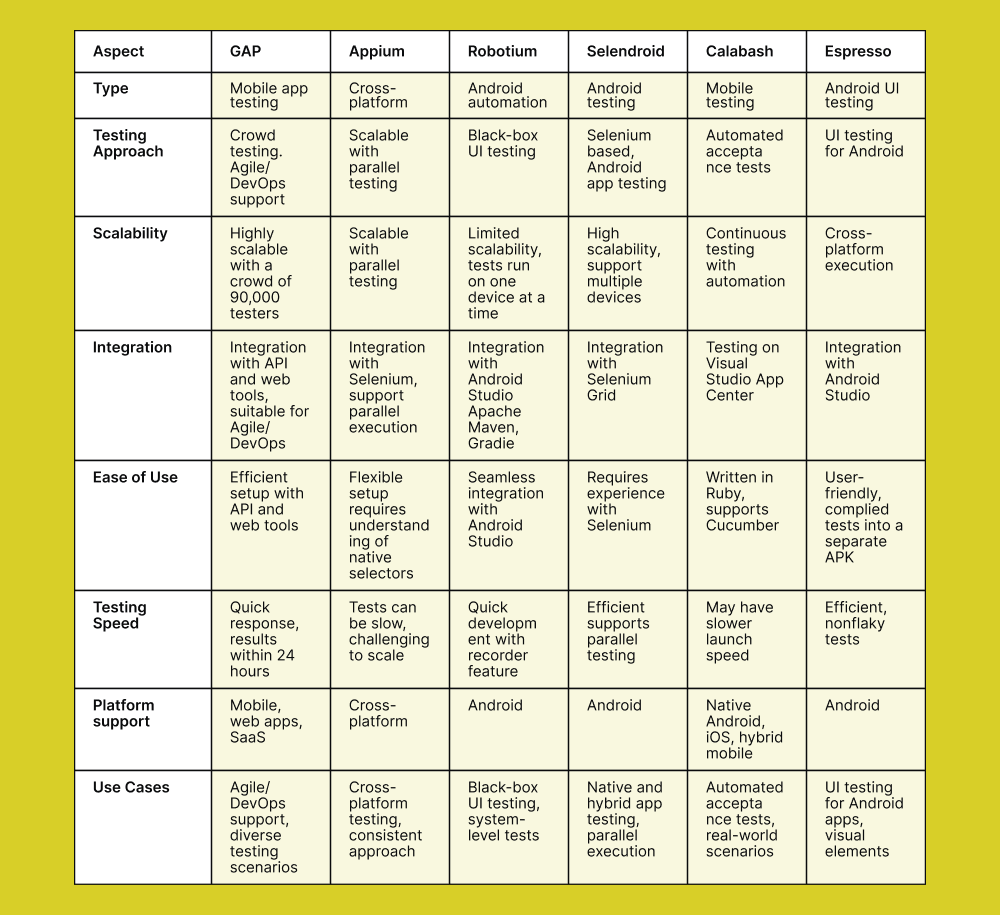
What makes Global App Testing unique?
As the Android landscape evolves, so must the testing methodologies.
Explore the advantages of selecting GAT as your testing partner: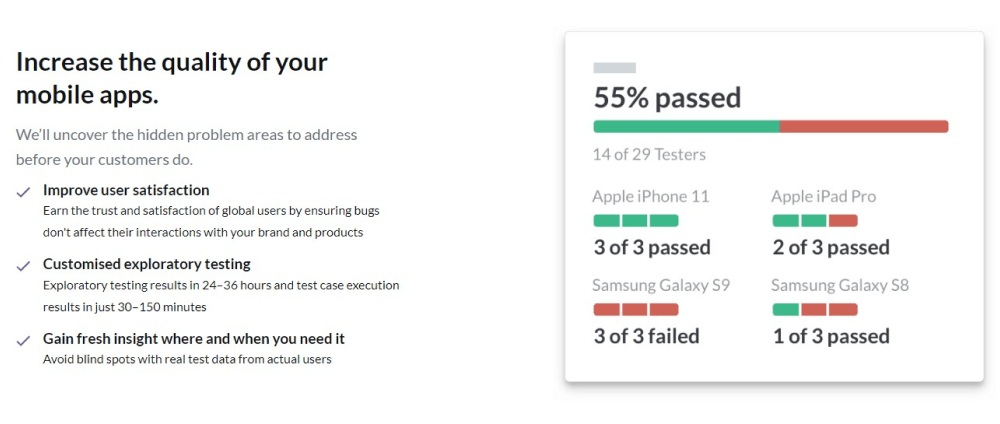
- Continuous 24/7/365 testing and scalable solutions.
- Extensive global coverage with a vast network of over 90,000 testers spanning 189+ countries.
- Utilization of a blend of crowd testing and AI-powered automation to ensure the delivery of high-quality products.
- Implementation of integration testing strategies to guarantee seamless compatibility with other applications or tools.
- Comprehensive coverage with both black box and white box testing methodologies.
- In-depth functional and non-functional testing to validate product performance and features.
- Tailored testing methods that seamlessly integrate with your existing workflow.
- Swift delivery of results accompanied by easily understandable reports.
- Seamless integration with popular tools already in use by your DevOps teams.
- Trusted by industry giants such as Meta, Google, and Instagram.
- Adherence to the highest global security standards and stringent measures.
Are you interested to learn more?
Let's arrange a discovery call and see how we can help you increase the quality of your mobile apps.
We can help you to effectively test your software and keep it aligned to your business goals
Keep learning
Top 17 Challenges in QA Testing To Overcome in 2025 [Solved]
70% of time saved for QA team at booking.com
Three ways that testing can drive global growth

